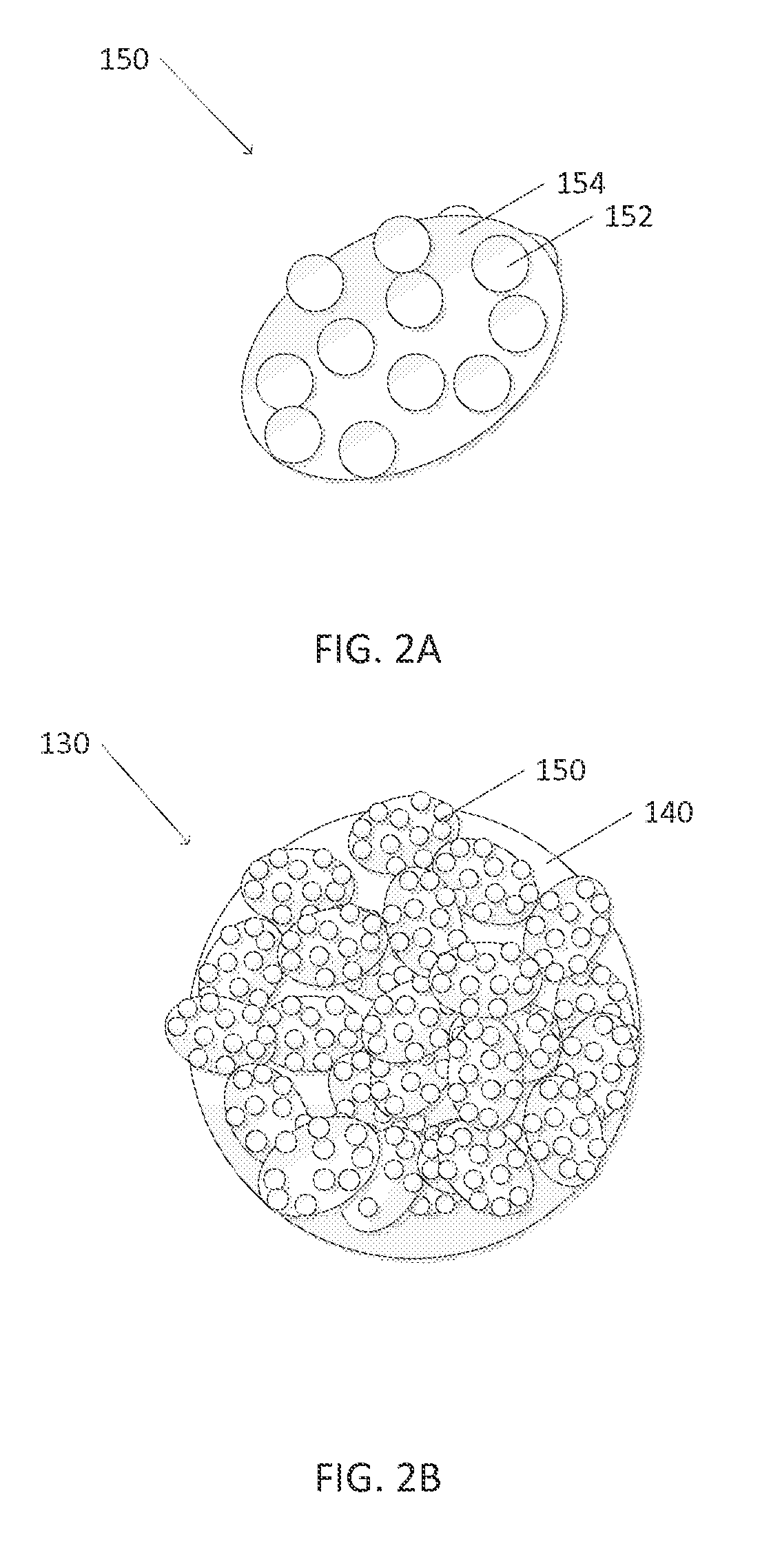Tandem photochemical-thermochemical process for hydrocarbon production from carbon dioxide feedstock
a carbon dioxide feedstock and photochemical technology, applied in the field of thermochemical, photocatalytic processes and systems, can solve the problems of low yield, long way to be efficient and commercially viable devices for the scientific community, etc., and achieve the effect of energy efficien
- Summary
- Abstract
- Description
- Claims
- Application Information
AI Technical Summary
Benefits of technology
Problems solved by technology
Method used
Image
Examples
example 1
Preparation of Titanium Dioxide / Cobalt Catalyst
[0072]Titanium dioxide-cobalt catalyst were prepared by incipient wetness impregnation of TiO2 (rutile) with sufficient aqueous solution of CoNO3 (Alfa Aesar) to give a loading of 5% by mass cobalt when dried, calcined, and reduced. The impregnated TiO2 was dried at room temperature for overnight and calcinations under air at 225° C. for 3 h and then sieved using No 100 (opening 0.15 mm). The dried catalyst was reduced at 400° C. in a flow of H2 for 8 h. XPS spectroscopy indicated that only 1% of the cobalt present was in the metallic state, the remainder was present as Co2O3.
example 2
Preparation of the Catalyst on a Substrate
[0073]The catalysis supports were Pyrex glass pellets having a 2 mm diameter. Before Co—TiO2 catalyst was immobilized on the Pyrex glass pellets, these glass pellets were etched in 5M NaOH solution for 24 h at 70° C. After they had been rinsed with DI water, the glass pellets were soaked in an aqueous suspension, which was prepared with 3 g of catalyst as prepared in Example 1 and dispersed in 3.0 mL of DI water with the aid of an ultrasonic bath to which 3.0 mL of 5% w / w Nafion PTFE was added. After removing from the Catalyst-PTFE solution, the glass pellets were heated at 70° C. in a vacuum oven. The resulting pellets were opaque with a dull gray powder thinly coated on the surface.
example 3
Preparation of Packed-Bed Thermophotocatalytic Reactor
[0074]A quartz tube having a length of 10 in. and a diameter of 1.4375 in. and a wall thickness of ⅛ in. and two plastic caps that fit on each end of the tube comprised the catalytic chamber. A stainless steel tube with an inner diameter of 0.25 in. and a length of 10 in. was placed along the center of the center of the quartz tube, and a cartridge heater was placed inside the stainless steel tube. The quartz tube was filled with the catalytic pellets as prepared in Example 2. Three holes were drilled on one of the caps and one hole was drilled in the other. Graphite tape, metal camps, and high temperature PTFE O-rings were placed between the caps and the tube to provide the necessary seal. A thermocouple was inserted into one hole, the cartridge heater was inserted through a central hole, and a fitting for the inflow gas line was placed in the third. A fitting for the outflow gas line was placed in the hole of the other cap. The...
PUM
| Property | Measurement | Unit |
|---|---|---|
| temperature | aaaaa | aaaaa |
| reaction temperature | aaaaa | aaaaa |
| reaction temperature | aaaaa | aaaaa |
Abstract
Description
Claims
Application Information
 Login to View More
Login to View More - R&D
- Intellectual Property
- Life Sciences
- Materials
- Tech Scout
- Unparalleled Data Quality
- Higher Quality Content
- 60% Fewer Hallucinations
Browse by: Latest US Patents, China's latest patents, Technical Efficacy Thesaurus, Application Domain, Technology Topic, Popular Technical Reports.
© 2025 PatSnap. All rights reserved.Legal|Privacy policy|Modern Slavery Act Transparency Statement|Sitemap|About US| Contact US: help@patsnap.com



